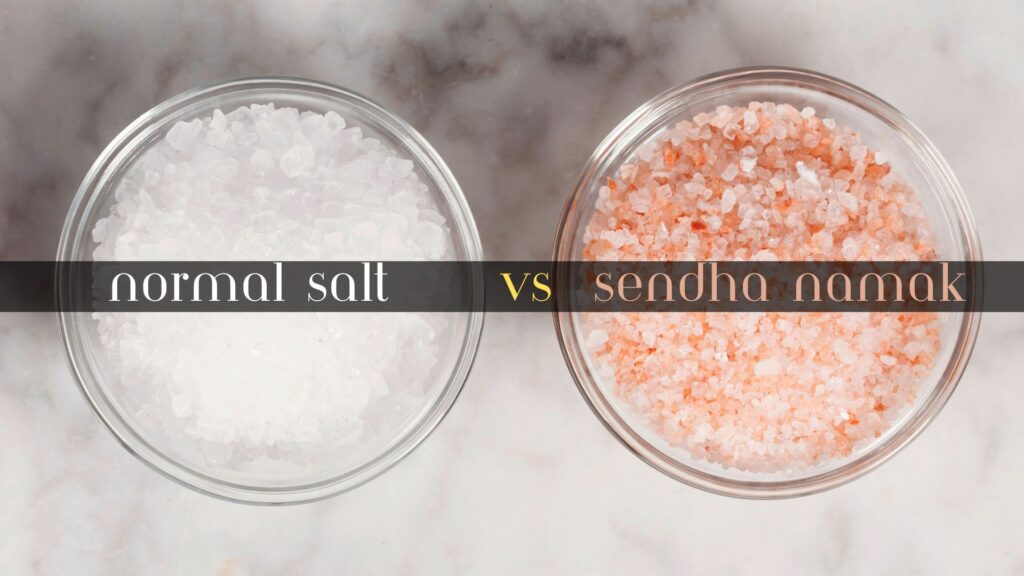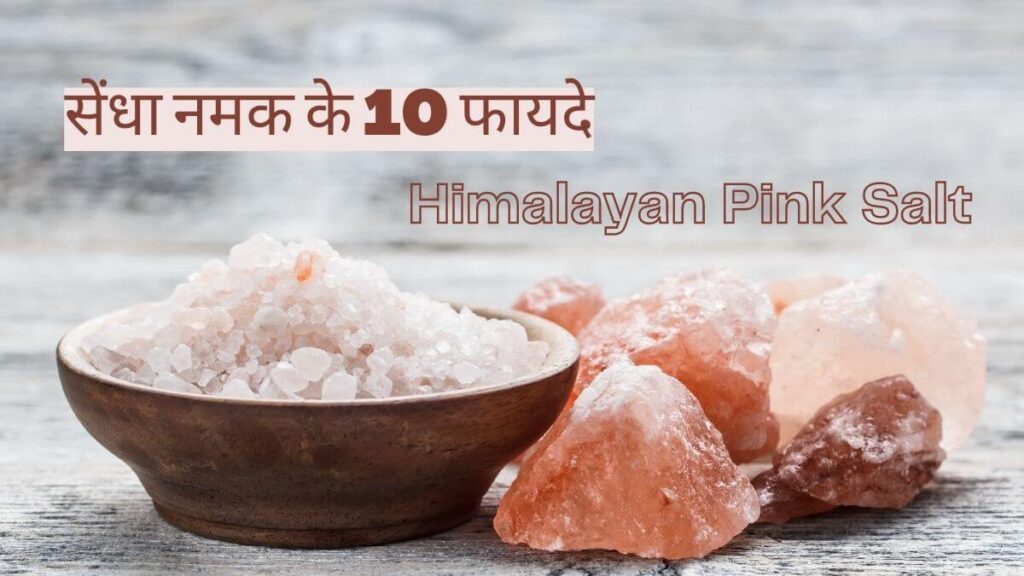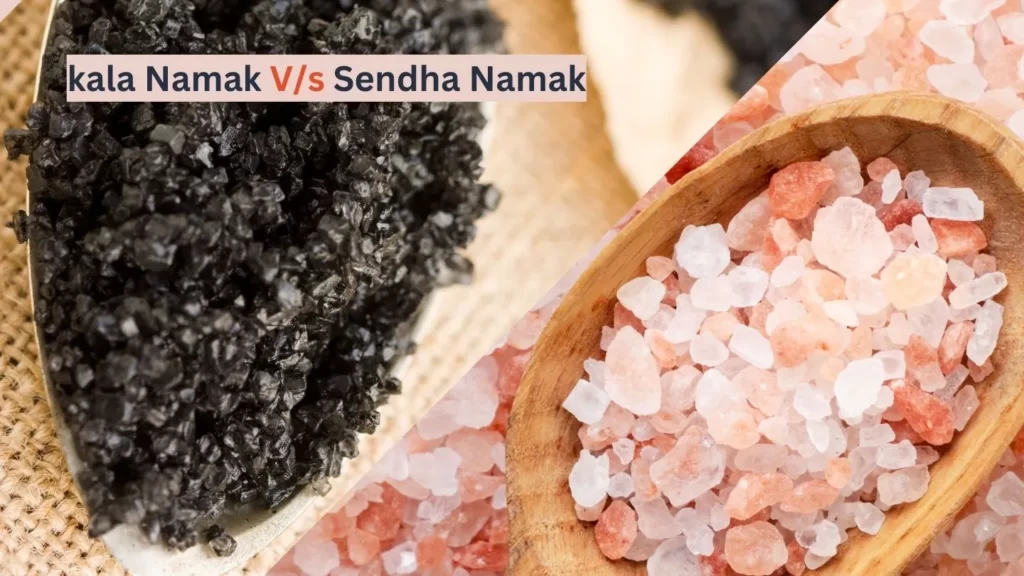We all know how important salt is in our lives. We use it for food and drinks, an essential part of our kitchen. Sodium and iodine are found in reasonable quantities in salt.
Many varieties of salt are available in the market, such as Normal salt, Sendha Namak (Rock Salt), and black salt. Due to having so many types of salt, we do not know which one is beneficial for our bodies.
So let us learn about the Difference Between Sendha Namak and Normal Salt and which one we should consume.
Friends, let us explore the various types of salt and determine which one is best for our health.
What is Sendha Namak (Rock Salt)?
Sendha Namak also known as Pink Salt or Rock Salt) is considered the purest form of salt. It appears light pink in crystal form. It is primarily found in Pakistan, which has extensive mines in the Himalayas. Due to its origin, it is also known as Himalayan salt. Sendha Namak is a rich source of elements like manganese, potassium, calcium, iron, zinc, and iodine, making it highly beneficial for consumption.
It is widely used in medicines, Ayurveda, and therapy. Compared to sea salt, Sendha Namak (Rock Salt) does not contain toxic elements, making it the most beneficial salt. Its effect is cold, and it is pure, making it suitable for cooking during fasting.
What is Normal Salt?
Normal salt, also known as sea salt or table salt, is Normally used in most households. It is obtained from the sea through the process of evaporation of seawater. The color of Normal salt is usually white, but it may appear light black, pink, or light greenish-white at times. The chemical name of Normal salt is sodium chloride, and it is produced from sea or saltwater lakes.
To make ordinary salt, saltwater is filled in small pits in the fields, and the water is evaporated to leave behind the salt. However, Normal salt may contain impurities, which need to be processed to obtain pure salt.
Difference Between Sendha Namak and Normal Salt
Sendha Namak Vs Normal salt differs in the following ways:
- Sendha Namak is extracted from salt mines located in the Himalayan Mountains, while Normal salt is made from the saltwater of the sea or saltwater lakes.
- The color of Sendha Namak is light pink due to the presence of oxide, while the color of Normal salt is typically white or greenish-white with a slight black tinge.
- Sendha Namakcrystals are very dry, while Normal salt crystals are moist.
- Sendha Namak absorbs moisture from food, while Normal salt does not absorb moisture quickly. This is why Sendha Namak (Rock Salt) dissolves quickly in water, whereas Normal salt takes time to dissolve.
- Sendha Namak is obtained directly from rocks, whereas Normal salt is obtained through evaporation.
- Sendha Namak (Rock Salt) does not require digestion as it is quickly absorbed in the body, while Normal salt requires digestion and is absorbed in our body with a delay.
- Sendha Namakhelps maintain the water level in our body, while Normal salt can cause dehydration.
- Sendha Namak (Rock Salt) is believed to be beneficial in high blood pressure, while Normal salt is considered harmful in high blood pressure.
- Sendha Namak is used in fasting food, while ordinary salt is not used.
- Sendha Namak is used in Ayurveda to make various types of medicines, while ordinary salt has no special significance.
- Sendha Namak can help prevent many diseases, while Normal salt does not have any such properties.
- Iodine is already present in Sendha Namak (Rock Salt), whereas it is added separately to Normal salt.
By comparing Sendha Namak Vs Normal salt, we can assume that Sendha Namak is more beneficial for our bodies. While Normal salt may not be as healthy, Sendha Namak protects us from many diseases and contains essential minerals.
Therefore, after learning about the different types of salt, we can conclude that Sendha Namak (Rock Salt) is the best option for our health. Let’s make the switch to using Sendha Namak (Rock Salt) in our diets.




